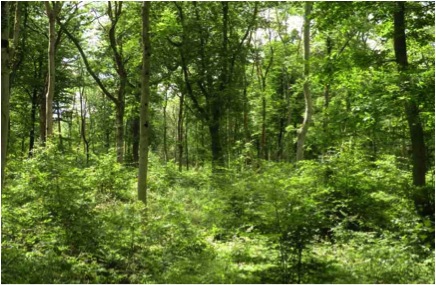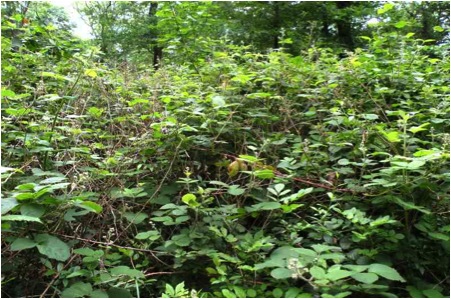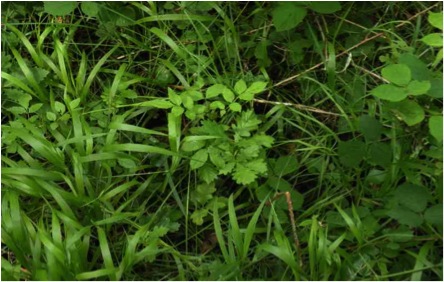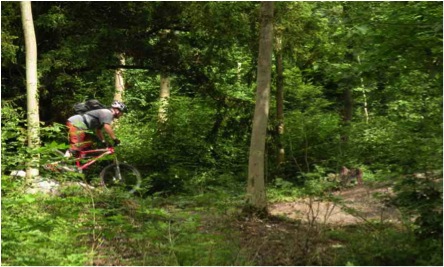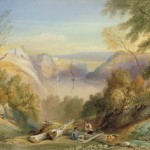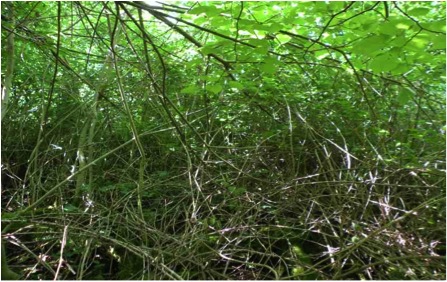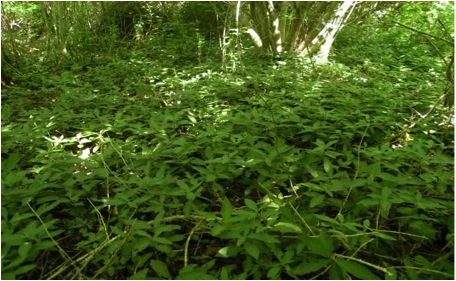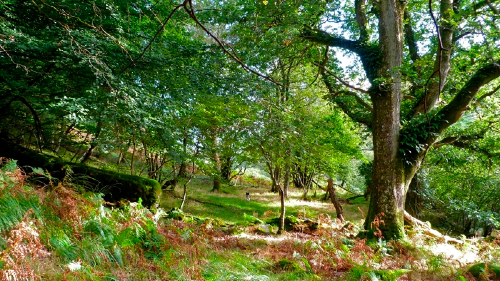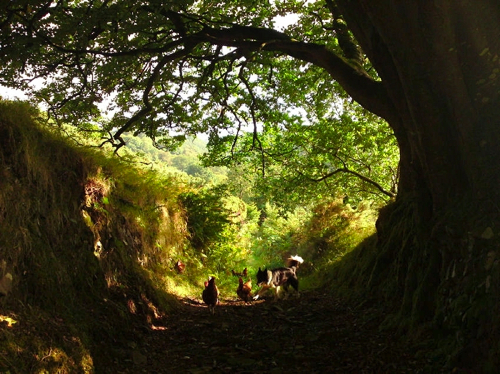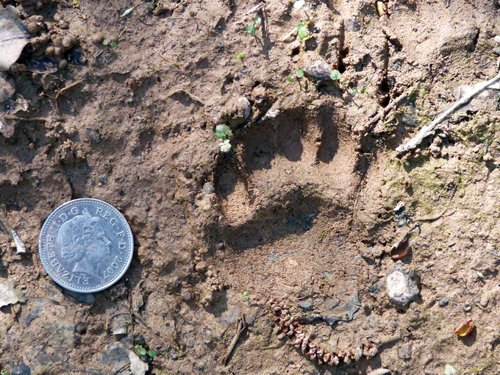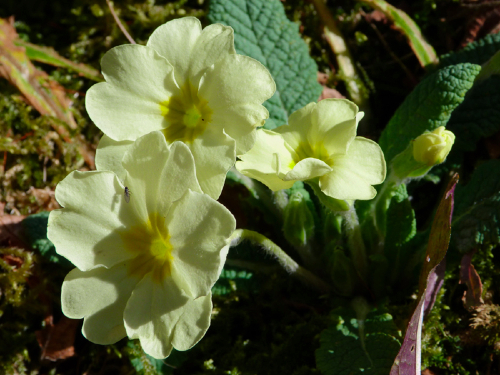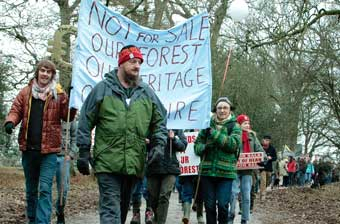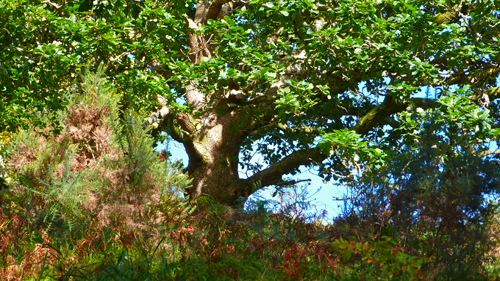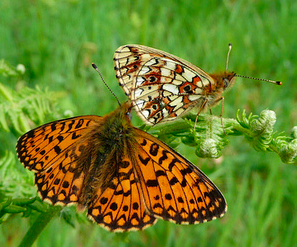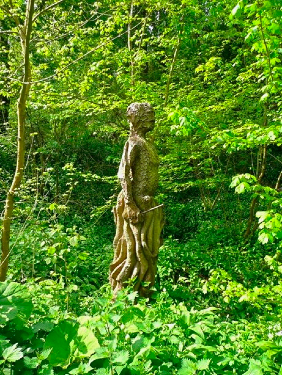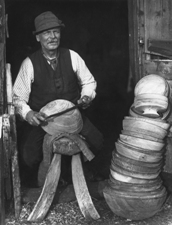by Roderick Leslie
As I step off the ride into the coppice I imagine a cowled and tonsured figure beside me. Here in Leigh Woods near Bristol we know from written records that the Monks of Leigh Abbey were managing these woods in just the same way at least 800 years ago. Today on a rare sunny day in June the vivid greens and exuberant growth are exhilarating. This is coppice with standards – single stem trees left uncut to grow into saw timber amongst the cut, sprouting coppice stools – and it is how our ancestors grew wood for heat and cooking, for fencing, the wattle that, with daub, filled the spaces between timbers in their houses and, of course, the timber for houses and perhaps even churches and cathedrals.
I have to stick to the path because the forest floor is a dense tangle of bramble. Three years ago some visitors probably tutted at the mess of the freshly cut coppice. Now the brambles have used the cut branches as a climbing frame. From their shelter come the calls of brand new birds, newly fledged Robins and Wrens taking their first faltering flights and using the dense shelter to find their feet in life.
But what about the trees ? Some coppice stools are sprouting vigorously above the tangle but for the rest, the trees seem swamped out. This is where anyone can play tree detective: zoom in, get down on your knees and look hard. In amongst the wealth of wild plants that spring up after coppicing there are lots of ash and oak seedlings and it’ll be the oak that, left unchecked, will dominate this wood in 100 years time.
I check for deer damage which has been a growing problem here, but the swarms of mountain bikers using the newly developed trails seem to have scared them off.
A little further on the tangle is reduced to low vegetation – the reason, far more older trees have been kept, showing just how sensitive plants are to shade.
A wall runs through the middle of Leigh Woods. On the other side the National Trust owns the land, one of its very oldest properties, bought by local people in the late 1800s, before the Trust itself was founded, to prevent development.
But what’s really remarkable here is that the Trust part of the woods was pasture woodland, not coppice: bigger trees grazed by the animals that are an anathema in coppice.
Bristol painter Francis Danby painted the big trees and open meadowland flowing down to the river Avon in the early 1800s, a favourite place for walks and picnics. The Avonmouth railway brutally cut off access to the river and over a century the two woods became much of a muchness, homogenous middle aged high forest to which the Forestry Commission added a few conifers after WW2.
It was FC’s reintroduction of coppicing in the late 1980s that changed all that and started to draw out the unique character of the two sides of the wood. That first coppice is coming up to its third cutting and if you’re brave enough to force your way into the thicket you can see how coppice works: the trees have won and the brambles are dead.
Shade tolerant Dogs Mercury is hanging on but it, too, will soon be shaded out and the dark, dead floor of the wood will look like so many neglected, stood over coppices across the country. Except that here the wood will soon be cut, releasing that burst of energy from the pent up store of seed in the soil.
Emboldened by FC’s lead (both FC and NT took quite a bit of flak for the crime of felling trees) the National Trust is restoring the unique character of their side of the wood: they have already cleared trees off the Iron Age hill fort and have recently reintroduced cattle grazing.
Maybe in a few years our monk would once again recognise the wood he knew 8 or 9 centuries ago. He might not even be too shocked by the lycra: we now know from picture restoration that our medieval ancestors were every bit as keen on bright (not to say lurid) colours as a modern mountain biker.
by Roderick Leslie
Retired head of policy at the Forestry Commission, Rod worked for the FC for over 35 years. In his time as a forester, he not only worked in Field management & Conservation policy but was also the commission’s Private forestry & Environment officer for the South and West of England.
Rod is a keen ornithologist and expert on the critically endangered Nightjar. His book ‘Birds and Forestry‘ (co-authored with Mark Avery, RSPB Conservation director), is acclaimed as a step toward sustainable forestry planning. Tackling the issues between forestry and nature conservation. Rod is a founder member of Our Forests!




